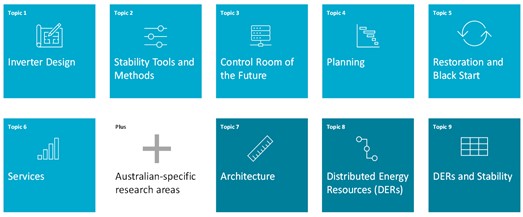Power system operators around the world face challenges in their transition to renewable energy sources. Some of them are global and some are local.
That’s why we’re keen to be part of an international consortium for research on power system transformation.
Managing our distributed energy resources
Key challenges for Australia include our ageing infrastructure, the need for investment in transmission and distribution, and the increasing complexity of more distributed energy resources (DERs) connected to the grid.
DERs generally refer to small-scale generation or demand resources that are connected to the distribution networks. In Australia, household rooftop solar currently takes the highest portion in DERs.
Electric vehicles (EVs) are another typical type of DER. In the short term, high night-time demand for EV charging may require better management. When doing so, we want to avoid voltage or congestion issues in distribution networks. But the future use of vehicle-to-grid technology will enable the stored energy in an EV to be pushed back into the grid. The capacity of this form of DER may become greater than rooftop solar within 10 years.
But DERs can be invisible to power system operators, who may only see the change in net demand they cause. For example, when DERs feed electricity back into the grid, it can look like the area is using less electricity. This makes operating the power system very complex for operators and network planners.
We need research to determine the specifications, measurements and forecasts that will ensure DERs are visible. Additionally, we need organisational and regulatory changes to support DERs. Better operation and control techniques, and communication infrastructure, will also be required.
A consortium for research on power system transformation
Australia is leading the way on DER uptake. Given this, it makes sense that we also explore how to effectively manage these ‘next wave’ technologies.
This is why we have joined the Australian Energy Market Operator[Link will open in a new window] (AEMO) and system operators from around the world. Together we're forming the Global Power System Transformation (G-PST) Consortium. The G-PST Consortium identified critical research areas to support the transition to advanced low-emission power systems globally. These are the first six topics in the graphic below.

We worked with others to adapt these foundational research questions for the Australian context. These areas support the interests of Australian consumers and seize opportunities for Australia to become a leader in this field of research and technology. The Australian-specific research areas are:
- Architecture: for coordinating new technology, regulatory approaches, market design and the distribution/transmission interface
- Distributed Energy Resources (DERs): addressing challenges and opportunities of a high level of DERs in controlling and operating a power system
- DERs and Stability: modelling and analysing DER responses to ensure power system security under very high DER penetration
A powerhouse of knowledge
Australia has always been an early adopter of new technologies and an innovator of existing ones. We have a unique opportunity to ensure Australia’s future energy security and reliability, while creating a stable energy sector to attract investment. By embracing this challenge we can build a powerhouse of knowledge that is exportable to the world. Better yet, it helps meet our emission reduction commitments.
